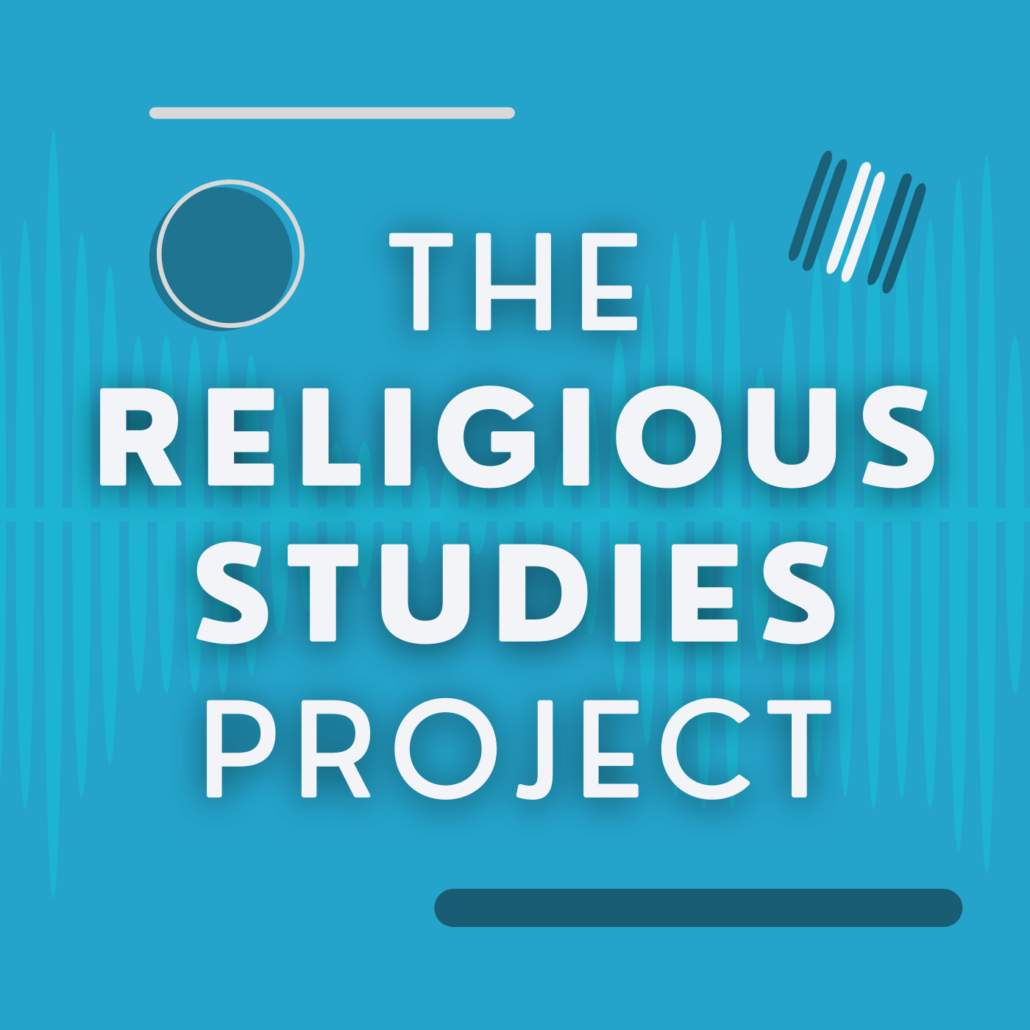…scholars should be more conscious of the ways in which some experiences are being distinguished (often implicitly), by either the person having the experience, the community in which the experience is happening, or the scholar studying it. Attention should be paid to the ways in which an experience is being marked as the sort of experience that is interesting.
 Other reasons to unpack ‘religions experience’
Other reasons to unpack ‘religions experience’
by Daniel Silliman, Heidelberg University
Published by the Religious Studies Project, on 13 March 2013 in response to the Religious Studies Project Interview with Ann Taves on Religious Experience (11 March 2013).
Charles Fox Parham’s historical significance is due to one fact: he was the first to outline and define early Pentecostal theology of glossolali, the experience that Pentecostals call “speaking in tongues.” He himself wasn’t the first to have the ecstatic experience of “spirit baptism,” and utter unknown words in an unknown language, but rather, as the religious leader at the Bethel Bible School in Topeka, Kansas in 1901 he was the one who theologized the experience of others (Goff 164). He said that the tongues were tongues. He said the experience was the spiritual gift of a new language, the evidence of sanctification, and the tool that God would use to spread the gospel at the end of time. In Ann Taves’ terminology, he was the one who deemed the experience of tongues a religious experience. Parham referred to himself as the movement’s “projector.” In light of Taves’ work, he might more precisely be called the “ascriber,” as he is the one who set this particular experience apart as special, founding this specific religious tradition with his ascriptions.
Lesser known, but perhaps also significant, is another aspect of Parham’s work as founder and leader of the nascent Pentecostal movement. He spent much of his time, from 1901 on, aggressively contesting the validity of Pentecostals’ ecstatic experiences.
After he started the movement, Parham was among its fiercest critics. According to historian Grant Wacker, he dismissed Azusa Street revival in Los Angeles, one of the most successful moments of early Pentecostalism, as “holy-rolling-dancing-jumping, shaking, jabbering, chattering, wind-sucking and giving vent to meaningless sounds and noises” (232). Many ecstatic experiences that others deemed the work of the Holy Ghost were, for Parham, “disorders” (Wacker 107). He dedicated himself, time and again, to brusque denunciations of experiences he considered to be lewd or racially inferior, manifestations of “the flesh” or “spook spirits” in “wild, weird prayer services” (Wacker 53, 125; Goff 130, 132).
These efforts to police the boundaries of Pentecostal experience have not gone unnoticed in Pentecostal historiography. Yet, they haven’t been foregrounded, either. They have been considered as secondary or even tertiary in the beginnings of this movement, construed normally as curious but not critically important power struggles. Taves’ work suggests it might be fruitful for historians to re-focus on these disputes.
Conversely, thinking about how Taves’ work could profitably re-direct religious historians in a case such as this might also serve to demonstrate the broader potential of Taves’ proposals. It can seem like Taves is interested only in very limited questions, that she is restricting herself to theoretical or definitional issues. A lot of what she does, for instance in Religious Experience Reconsidered, is very abstract, and focused on seemingly obtuse issues such as whether or not it’s helpful to use second-order terms such as “religion,” “sacred,” “mystical” and “magic” (Taves 161). The project of unpacking “religious experience,” turns out, though, to be useful for more than just clarifying what is meant by “religious experience.”
For Taves, an intra-tradition dispute over the authenticity and legitimacy of experiences, such as happens with Parham and Pentecostalism, serves much the same purpose as flags at an archeological site: This is where the digging should start. As she tells David Wilson, late in her interview with the Religious Studies Project, “it’s that kind of process that I just kind of have gotten entranced with.” For Pentecostals, this process of separating true and false manifestations of the Holy Spirit is called “discernment.” For scholars, Taves argues, attending to such practices and processes can allow for the differentiation of the many interacting forces at work in experiences that are understood as religious. “We can see,” she says,
how different individuals or groups or traditions characterize the experience in question, so we can look at how they set the boundaries of what counts as religious experience, but we can also watch how these experiences come into being. How they’re shaped. How they develop. How they morph.
That is to say, examinations of the processes by which experiences are marked out as especially needing ascriptive explanation, how they are deemed religious, and the ways in which subsequent contestations over that then play out, might clarify what it is that’s being studied when one studies “religious experience.” But then, further, it might also uncover a host of worthwhile questions that enable new examinations not just of experience as such, but of whole histories and traditions.
From a certain perspective, Taves’ work is perhaps best understood as an attempt to mediate in a theoretical dispute between constructivists and neo-perennialists over what “religious experiences” actually are, or if there are any, and the best way to understand what is “religious” about experiences deemed religious (Taves 91). In her intervention into this dispute, Taves endeavors to destabilize the object of study in places where it has become too stable, so that it is, as she tells Wilson, “this totally clear mystical or spiritual experience [that has] surfaced totally without any attributional processes at all,” and to stabilize the object of study in other places, where it has seemingly dissolved into discourse, so that it seems that “there was no experience there that could be accessed in any sort of way.” The idea is that approaching those experiences that are taken as religious experiences as being either simply, irreducibly religious, i.e., sui generis, or, alternatively, as merely social constructions, as if the experience were invented out of the thin air of discourse, is insufficient. In both cases, too many of the details “on the ground” are obscured or lost by the scholarly approach.
The answer Taves develops to that problem, that theoretical impasse, begins with an apparently sideways inquiry into why any given experience seems interesting in the first place. Taves proposes, first, that scholars should be more conscious of the ways in which some experiences are being distinguished (often implicitly), by either the person having the experience, the community in which the experience is happening, or the scholar studying it. Attention should be paid to the ways in which an experience is being marked as the sort of experience that is interesting. That is to say, attention should be paid to the ways in which certain experiences seem or come to seem special or singular (Taves 162). This can be done by asking a series of inter-related questions of the “specialness” or “singularity” of a given experience:
It is special in what way?
It is special to whom?
It is special to what end?
Such a line of inquiry is proposed as a way to overcome a deadlocked dispute between two schools of thought. The result, however, need not be merely the settling of an academic quarrel: that series of questions can also open up new ways to understand the shape of movements such as Pentecostalism. By focusing first on the question of the importance of an experience, by being interested in the interestingness with which an experience seems to be endowed, it’s possible to come up with all sorts of new questions. As Taves writes in Religious Experience Reconsidered,
we could ask, for example, if there are traditions that consider visualization practices efficacious relative to a goal they deem religious. If so, do the practices always work? If not, how do practitioners deal with or account for that? [….] We could also examine the relationship between experiences that individuals consider religious and traditions that rely on composite ascriptions to make authoritative judgements about experience at the group level. What happens if someone seemingly has a spontaneous experience, which they consider significant, within a tradition or cultural context that places little value on such experiences? Will it still seem important? If it does, what claims will the individual make about the experience in light of what is or is not expected by the group? How will the group respond? Alternatively, what happens if the tradition or culture does value such experiences? Will they develop, shape, and/or constrain it? And what happens if outsiders or internal critics attribute experiences to different causes than insiders do?
One example of the potential for such a project is T.M. Luhrmann’s new book, When God Talks Back, a psychological-anthropological investigation into the prayer practices of Charismatic Christians in The Vineyard church. As Luhrmann explains her project, she “use[d] the ethnographic method to identify a process that seems to be psychological [….] identifying the consequences of those practices that seem to have something to do with the way brains and bodies are built” (377). Lurhmann unpacks the experience that people in these churches are having of God, looking at the contexts in which those experiences happen, the processes by which they happen, the ways in which specialness is ascribed the experience and the ways that that is negotiated. In the story Luhrmann tells, Charismatics begin by learning how to be conscious of and attentive to mental processes that others do not note as important or interesting or special. They become aware of something non-ordinary, which had previously seemed so ordinary as not be notable. They adopt a new “theory of mind,” and “learn to experience some of their thoughts as not being thoughts from them, but thoughts from God that they hear inside their mind,” as Luhrmann told Terry Gross late last year .
One of the things that’s so compelling about Luhrmann’s work is that it gets at the question of why someone would want to embrace this faith and be a part of these religious communities. There’s lots and lots of work on the ontological commitments of such religious groups, not to mention their political commitments and position in contemporary American culture wars. Much has been done on the content of their belief, but Luhrmann’s work examines instead the questions of the practice and experience of that belief. She isn’t writing about religious experience as such, with the aim of understanding specifically this idea or this category of experience, but by focusing first on the question of the experienced specialness of an experience, she provide a quite compelling account of this contemporary spirituality, of how and why it has the shape it has.
Looking at the way such things were negotiated historically in early intra-Pentecostal disputes over experiences could, I think, lead to a valuable alternative account of how Pentecostalism developed in the way it did. This would mean looking at the acriptive work that was done in the founding moment in 1901, when Agnes Ozman spoke in tongues and was understood, by herself and those around her, to be doing something important and special (Goff 67-69), but it would also mean foregrounding other moments that have been given less attention. A moment such as the one in 1910, for example, where Ozman began to dance ecstatically and danced up the aisle of a church and to the pulpit (Wacker 106), a controversial place for her to be dancing, could be profitably examined using Taves’ ideas about “religious experience.” In that controversy, Ozman offered answers to the questions about how the experience was special, and to whom, and to what end. Her answers were quite different from those that Parham and other religious authorities offered. There were conflicting strategies of discernment. If one follows Taves’, though, in the apparently tangential project of unpacking the various ideas about “religious experience,” and the processes by which such experiences are deemed important, and the ways in which conflicts about their legitimacy play out, the whole history of this tradition starts to open up in new ways.
This is perhaps an unorthodox way to argued for the value of Taves’ theoretical work on the question of experience. When asked what the goal of her work was in 2010, Taves’ told The Immanent Frame that she wanted to “open up pathways that will make it easier to engage the scientific literature on the study of the mind without simplifying the conceptual framework in ways that would frustrate scholars of religion” . Her engagements with these theoretical issues and definitional issues have significant potential for a broad applicability, though, as they give scholars a number of seemingly sideways approaches that turn out to be quite powerful.
This material is disseminated under a Creative Commons Attribution-NonCommercial-NoDerivs 3.0 Unported License. and can be distributed and utilised freely, provided full citation is given.
About the Author:
 Daniel Silliman teaches American religion and culture at Heidelberg University’s Center for American Studies. His research is focused on 20th century American evangelical engagements with culture, contemporary cultural practices of belief, and religious book history. He is currently working on his doctoral dissertation on representations of belief in evangelical Christian fiction. He has an M.A. in American Studies from the University of Tübingen and a B.A. in Philosophy from Hillsdale College. He blogs on American religion at www.danielsilliman.blogspot.com
Daniel Silliman teaches American religion and culture at Heidelberg University’s Center for American Studies. His research is focused on 20th century American evangelical engagements with culture, contemporary cultural practices of belief, and religious book history. He is currently working on his doctoral dissertation on representations of belief in evangelical Christian fiction. He has an M.A. in American Studies from the University of Tübingen and a B.A. in Philosophy from Hillsdale College. He blogs on American religion at www.danielsilliman.blogspot.com
References:
- Goff, James R., Jr. Fields White Unto Harvest: Charels F. Parham and the Missionary Origins of Pentecostalism. Fayetteville: University of Arkansas, 1988.
- Luhrmann, T.M. When God Talks Back: Understanding the American Evangelical Relationship with God. New York: Knopf, 2012.
- Taves, Ann. Religious Experience Reconsidered: A Building-Block Approach to the Study of Religion and Other Special Things. Princeton: Princeton, 2009.
- Wacker, Grant. Heaven Below: Early Pentecostals and American Culture. Cambridge: Harvard, 2003.



